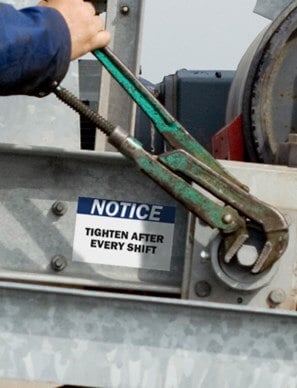4 Lean Secret Weapons for Next-Gen Industry
03
February,
2023
2 MINUTE READ

Moving into the future, businesses know success relies on man working with machine. Better 4.0 technology is steadily entering manufacturing and material handling industries. This integration is fast becoming a component of lean manufacturing. For industrial workplaces looking to modernize and operate efficiently, waste must be cut from the top on down without compromising quality. Manpower must be used where technology can only assist. Using the power of lean manufacturing principles, technology, and solid safety plans are truly the best ways to accomplish efficiency in any workplace.
What Do Lean Robotics Look Like?
Industrial robot adoption is rapidly increasing throughout the world. In 2017, there were 200 robots working in industry per 100,000 workers in the United States and nearly three times more in Korea, according to data by the Information, Technology, and Innovation Foundation. Workplaces that have a high risk of repetitive stress injury and have a staff level that is difficult to obtain and retain typically are more likely to adopt lean robotics.
"I hope the future brings us more organizations with views like Toyota," said Mark Graban, an established lean consultant, author, and expert who runs LeanBlog.org. "Toyota doesn't use technology to replace workers; they use robots and other technology to assist workers -- to make work safer and to improve quality. Toyota realizes that robots cannot participate in process improvement; they value the brains of their human workers. Lean and the Toyota Production System is a more humanistic alternative to the notion of treating human workers like robots (as some companies get accused of doing)."
 Lean Robotics Checklist
Lean Robotics Checklist
Companies wanting to renovate, change, or optimize their facility can integrate technology for a complete lean transformation that can evolve into the future. To accomplish lean in any facility, safety should be seen as an asset and a value in lean manufacturing principles. Safety has benefits far beyond moral obligation and compliance, it saves money by preventing unnecessary downtime, and it serves as a key indicator of quality. Here are a few facility management tips to reinforce safety with lean robotics:
- Use Innovative Technology: New equipment can be expensive and are not helpful if they do not handle tasks that can be fully automated. Conduct a workplace analysis that benefits workers to utilize their skills, intellect, and diversity.
- Site-specific Safety: OSHA has a section that covers robot safeguarding. Communicate robotic work boundaries and highlight human work stations, emergency instructions, and other unique facility messages using custom signs and flexible floor marking tape.
- Continuous Training: It is necessary that workers know what to do and how to maintain a peak performance level through continuous learning resources. Ensure employees understand the workplace lean system, emergency plans, and exposure policies. Identify risks and workplace hazards by allowing human workers to be a part of the process. Use employee feedback for improvement.
- Manage Complex Change: Use a flexible plant design that can change as processes and machinery change. Stay on top of facility changes, needs, and maintenance. Eliminate waste of time, energy, and more through continuous improvement and preventative maintenance.
Using robotics, smart technology, and advanced machinery can all be a part of lean for continuous improvement, minimizing downtime, and eliminating waste. Implementing a lean system and lean technology make for a complete lean transformation.
RELATED RESOURCES

Work Safe and Smart in Cold and Windy Temps
As seasons change, so must approaches and methods to performing a particular task. Working smart and ...
Read
OSHA to Launch New Enforcement Measures
OSHA will place less emphasis on counting the number of inspections it conducts; instead, it has developed a ...
Read
Solar Energy Future Bright in California
California recently approved a plan to have solar panels included on the roofs of all new-home construction ...
Read.png)


